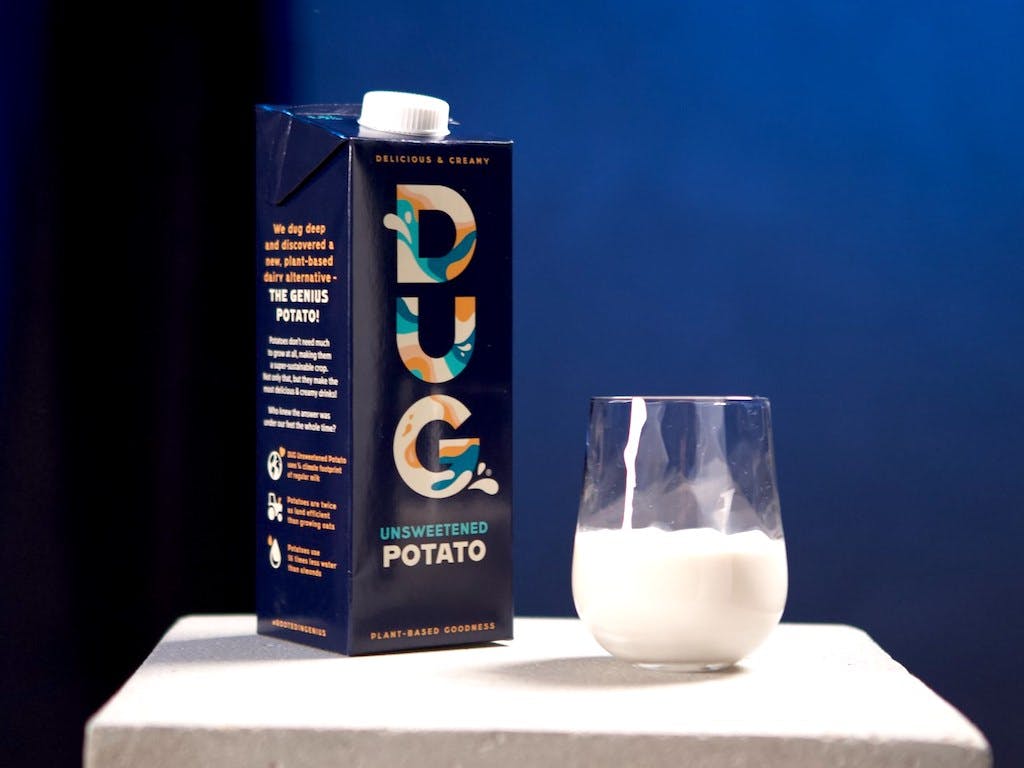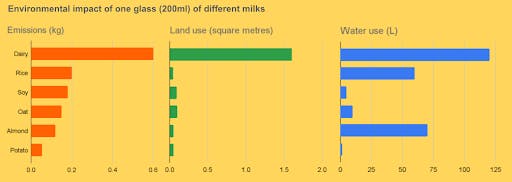Lifestyle
Ellie Unearths: Everything You Need To Know About Potato Milk
5min read
Potato milk. Milk made from potatoes. Potato derived drink. These are not groups of words I expected to be saying this week, or ever in fact. But here we are, August 2021 and Swedish brand ‘Dug’ has just released the first widely available potato milk. It’s not got the instant appeal of chocolate hazelnut milk, but after only an initial glance over the key benefits, I’m quickly warming to the idea.
What does it taste like?
A natural first question, because it sounds … bad. I’m picturing watery mashed potato or that starchy water created when you soak potatoes and I’m imagining a taste comparable to those undercooked potatoes pulled out of the oven when you couldn’t wait any longer for dinner. But I can’t find a bad review and, on the contrary, it’s said to be mild in taste with a white, creamy texture. There’s even a barista version that foams similarly to dairy milk, making it a good substitute for lattes and useful in cooking and baking.

Photo credit: DUG
Is it good for you?
Potatoes are full of protein, vitamins, minerals, fibre and antioxidants (as many as blueberries in some varieties). They have a low glycaemic load, so don’t affect your blood sugar as much as pasta or rice. As a plant-based milk, it’s more allergen-friendly than many, with no soy, gluten or nuts and is also low in saturated fats and fortified with folic acid, vitamin D and B12. So in short, yes, very good for you.

Is it better for the planet?
All plant-based milks are vastly more sustainable than dairy milk, but potato milk is shaping up to be the most sustainable yet. The main benefits, as described by Dug, are that:
- Growing potatoes are twice as efficient as growing oats in terms of land use
- The climate footprint of potato milk is 75% lower than dairy milk
- Potatoes also need a lot less water to grow, for example they require 56x less water than almonds

A closer look
It’s important to put these figures into perspective and avoid vilifying almond or oat milk off the back of these findings, which remain great options for reducing your carbon footprint. Using Poore & Nemeck’s 2018 study (link) which compares the environmental impact of different food types - including a comparison of milk options - and adding Dug’s assessment of their potato milk into the visual below, you can see that potato milk performs best on all fronts:

However what this also highlights is that, especially for emissions and land use linked with the production of different milks, the most important step in reducing our diet-related footprint is achieved by removing animal products from our diet.
Food production is responsible for 25% of global emissions so being critical of what we eat is vital, but changes to our diet should be viewed as part of the bigger picture and any steps towards a more plant-based diet should be celebrated. Even if that means sticking with almond milk and accepting a slightly higher water-footprint than the newest plant-based milk, because the reduction in water use from dairy to almond milk is still significant and the wins overall (including health, emissions and land use) are monumental.
In short
Potato milk sounds well worth a try, especially if available at your local shop or if the health attributes would be of particular benefit to you, but don’t throw out your other plant-based milks because they are all still solid improvements on dairy milk.
By Ellie Harrison
Ellie heads up all-things sustainability, making sure everything we do is as conscious as possible. She couldn’t live without volleyball, killer whales and porridge… though hopefully not at the same time.
Let us take care of dinner
We help to make eating more plants easy and delicious. Fancy letting us take care of dinner? Check out our delicious meals here.
Shop now
